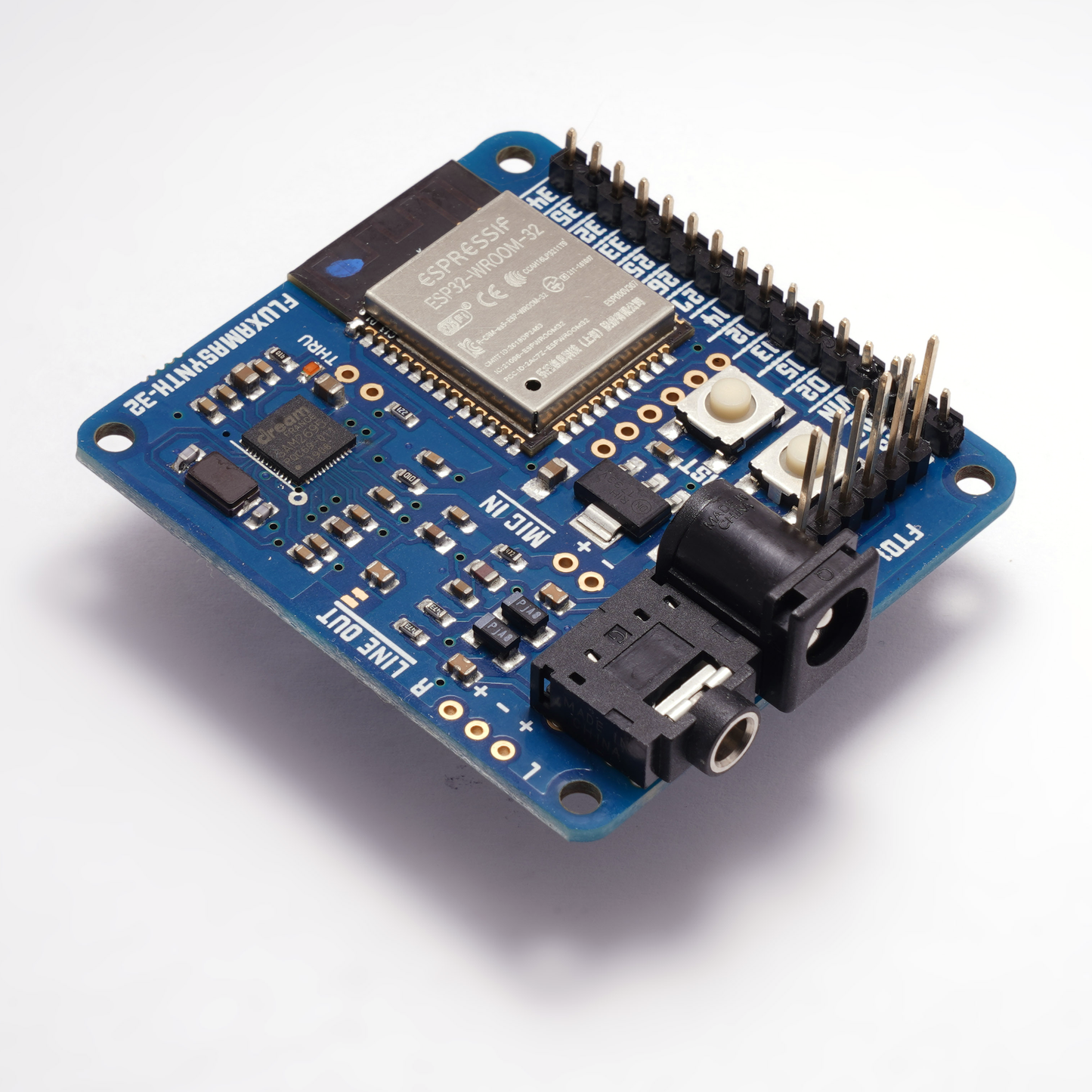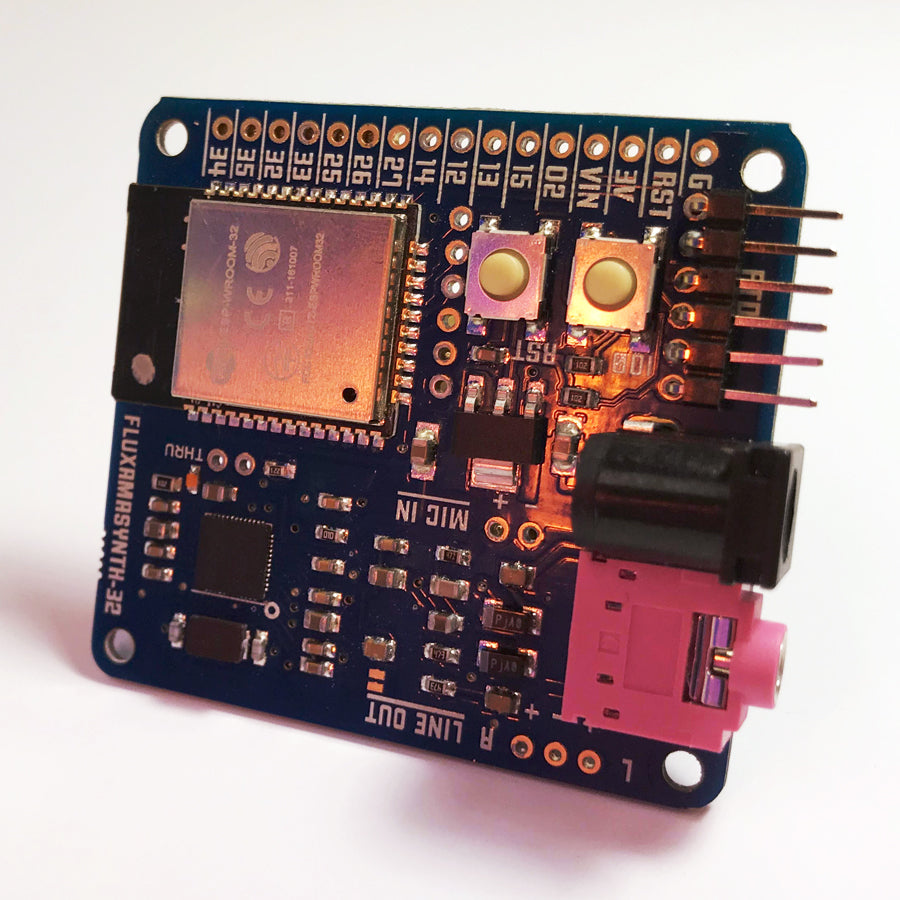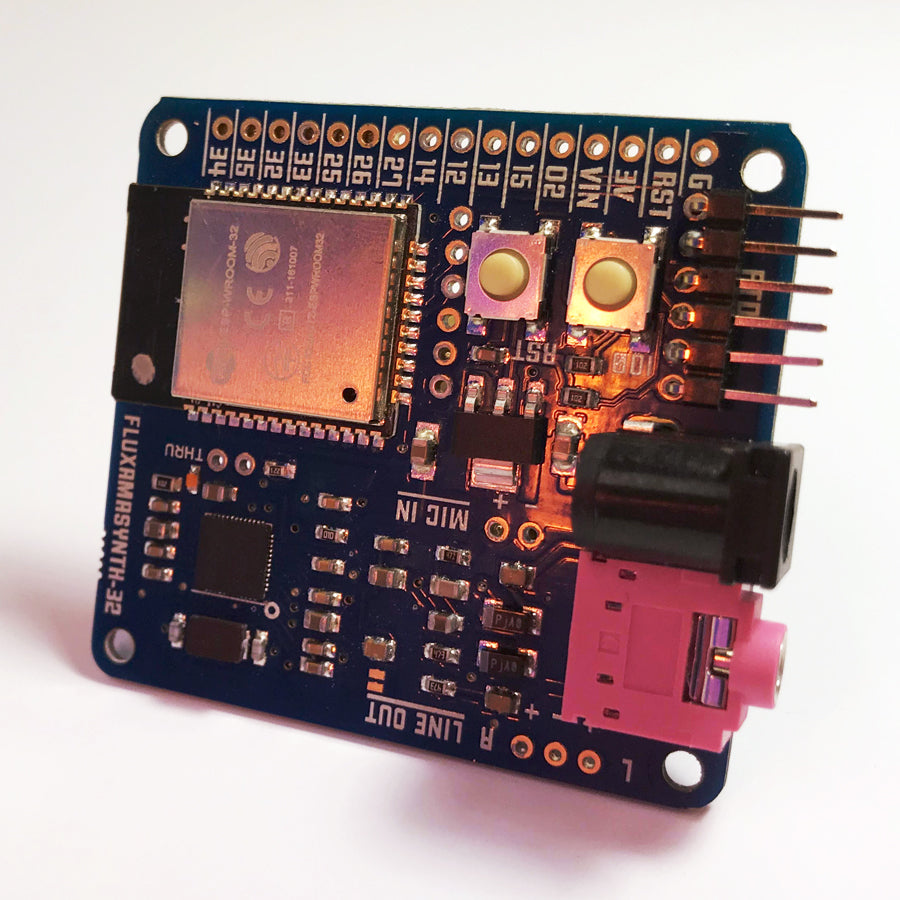Fluxamasynth-32
SKU: MD0302Couldn't load pickup availability
Share
The Fluxamasynth is a module that makes it easy to add high quality sound to any Arduino or Raspberry Pi project. The Fluxamasynth is an embarrassment of riches when it comes to big sound, access to lots of low level tweaks, and a design that emphasizes quality and affordability.
Other modules require some sort of Arduino or Raspberry Pi to act as the control module. The Fluxamasynth-32 has an ESP32 microcontroller baked right on board so it is an all-in-one solution. The ESP32 can be programmed using the Arduino IDE and has Wifi and Bluetooth capabilities, so these nodes can talk to each other over Wifi or Bluetooth.
Note that this is a 3.3V board, and that inputs ARE NOT 5 volt tolerant so connecting 5 volt signals to the board must be done through 10K or greater resistors or preferably, with 3.3 volt signals. The board will also require an FTDI cable or our BUB III to program. We have a variant package that includes the BUB III. If you need a USB micro cable we have those here.
With the Fluxamasynth you can:
- Make your own MIDI instrument with unconventional analog sensors
- Create algorithmic compositions and put them in a box
- Use it in a homebrew pinball machine to generate music and sound effects
- Build an unusual percussion device
- Make a space age Karaoke machine
- Augment an analog instrument with a Fluxamasynth-based hyperinstrument
The example code shows an example of scoring a long composition for the Fluxamasynth: an implementation of In C by Terry Riley. The Fluxamasynth has a built-in wavetable with 128 general MIDI sounds and an additional set of 128 variations and dozens of percussion sounds. It can play music in 64-voice polyphony without effects or 38 voices with effects. Here are some additional features:
- 14 bits of pitch bend range
- Access to fine and coarse tuning in cents
- Access to low level wavetable parameters
- Stereo line level output
- Master volume and per-channel volume control
- 4-band Equalizer
- Chorus, flange, delay effects
- 8 Reverb effects
- Spatial effects
The ATSAM2695 chip that does all the work is hooked up to the serial transmit (TX) line of the ESP32 microcontroller; making music is as easy as sending a set of MIDI-formatted bytes to the serial port (the ESP32 has two). You can program the Fluxamasynth with the Arduino IDE and the Modern Device Fluxamasynth library. See the Quick Start guide for a complete example.
- Fluxamasynth library for Arduino IDE; supports Arduino boards, ESP32, and Feather variations
- Quick start guide
- png of the board design
- png of the schematic
- A link to a users site that parses midi files and a nice video
- ATSAM2695 datasheet
Please be aware: Due to current fluctuations in part availability, lead times may vary on certain products




